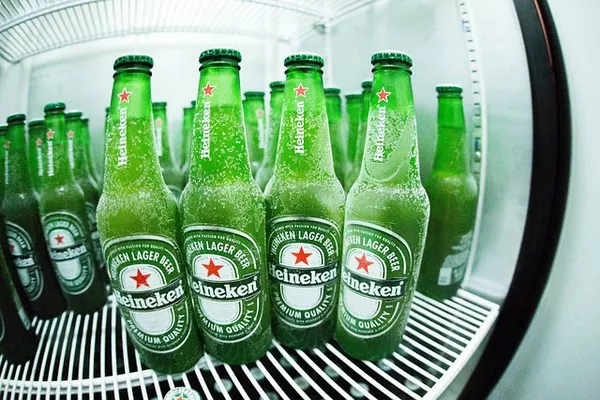Refrigeration units have become an integral part of modern life, playing a vital role in preserving and maintaining the quality of perishable goods, extending the shelf life of food products, and providing comfort through air conditioning. These units are a cornerstone of various industries and sectors, ranging from food storage and distribution to pharmaceuticals and manufacturing. In this article, we will delve into the fundamentals of refrigeration units, exploring their mechanisms, components, applications, and environmental considerations.
The Basics of Refrigeration
At its core, refrigeration is a process that involves the removal of heat from a confined space, leading to a reduction in temperature. This process is achieved through a refrigeration cycle, which comprises several key stages: compression, condensation, expansion, and evaporation.
The compression stage involves a refrigerant gas being compressed, which raises its temperature and pressure. This high-pressure, high-temperature gas is then directed to the condensation stage, where it releases heat to the surrounding environment and transforms into a high-pressure liquid. The liquid refrigerant then flows through an expansion valve, entering the expansion stage, where it undergoes a sudden decrease in pressure. This causes the refrigerant to expand and evaporate, absorbing heat from its surroundings and significantly lowering the temperature. Finally, the low-pressure, low-temperature gas enters the evaporation stage, where it absorbs heat from the space to be cooled, completing the cycle.
Components of a Refrigeration Unit
A refrigeration unit is a complex assembly of various components, each serving a specific purpose in the refrigeration cycle. The major components include:
Compressor: The compressor is the heart of the refrigeration unit. It is responsible for pressurizing the refrigerant gas, raising its temperature and pressure, and circulating it through the system.
Condenser: The condenser is a heat exchanger that facilitates the release of heat from the high-pressure refrigerant gas. As the gas cools, it condenses into a high-pressure liquid.
Expansion Valve: The expansion valve is a throttling device that allows the high-pressure liquid refrigerant to expand rapidly, causing a drop in pressure and temperature.
Evaporator: The evaporator is another heat exchanger located in the area to be cooled. Here, the low-pressure liquid refrigerant evaporates, absorbing heat from the surroundings and cooling the space.
Refrigerant: The refrigerant is the working fluid that undergoes phase changes within the cycle, absorbing and releasing heat as it changes from a gas to a liquid and vice versa.
Fans: Fans are used to circulate air over the condenser and evaporator coils, aiding in the heat exchange process.
Piping and Tubing: These components transport the refrigerant throughout the system, connecting the various stages of the cycle.
Applications of Refrigeration Units
Refrigeration units find a wide range of applications across diverse industries, contributing significantly to the quality and safety of various products and processes. Some of the key applications include:
Food Industry
Refrigeration units play a critical role in preserving the freshness and extending the shelf life of perishable foods. From the moment produce is harvested to the time it reaches consumers’ tables, refrigeration units are used in storage, transportation, and distribution to maintain optimal temperatures and humidity levels. This prevents the growth of spoilage microorganisms and helps retain the nutritional value of the products.
Pharmaceutical Industry
Pharmaceutical products, especially vaccines and certain medications, require strict temperature control to maintain their efficacy. Refrigeration units are used in laboratories, distribution centers, and medical facilities to store and transport these sensitive products, ensuring that they remain within specified temperature ranges.
HVAC (Heating, Ventilation, and Air Conditioning)
Refrigeration units form the basis of air conditioning systems, providing comfortable indoor environments in residential, commercial, and industrial settings. By removing heat and humidity from the air, these systems create a pleasant atmosphere that enhances productivity, health, and well-being.
Manufacturing and Chemical Processes
Industrial processes often generate heat that can be detrimental to both products and machinery. Refrigeration units are employed to cool equipment, raw materials, and final products, maintaining consistent quality and preventing overheating-related issues.
Environmental Considerations
While refrigeration units offer invaluable benefits to various industries, they also raise environmental concerns, primarily due to the use of synthetic refrigerants that contribute to greenhouse gas emissions and ozone layer depletion. Many traditional refrigerants, such as hydrochlorofluorocarbons (HCFCs) and chlorofluorocarbons (CFCs), have been phased out due to their harmful effects on the environment.
In response to these concerns, the industry has been transitioning toward more environmentally friendly alternatives. Hydrofluorocarbons (HFCs), while less harmful to the ozone layer, still have a significant global warming potential. Thus, there is a growing emphasis on adopting natural refrigerants like ammonia, carbon dioxide (CO2), and hydrocarbons. These alternatives have minimal environmental impact and lower greenhouse gas potential.
Additionally, advancements in technology have led to the development of more energy-efficient refrigeration units. These units not only reduce operating costs but also minimize the carbon footprint associated with energy consumption.
Conclusion
Refrigeration units are the backbone of various industries, offering indispensable benefits to food preservation, pharmaceutical storage, air conditioning, and manufacturing processes. By harnessing the principles of the refrigeration cycle and utilizing intricate components, these units enable us to create controlled environments that maintain specific temperatures and humidity levels. As the world continues to address environmental concerns, the ongoing evolution of refrigeration technology toward more sustainable practices promises a future where efficient cooling and responsible environmental stewardship coexist harmoniously.

